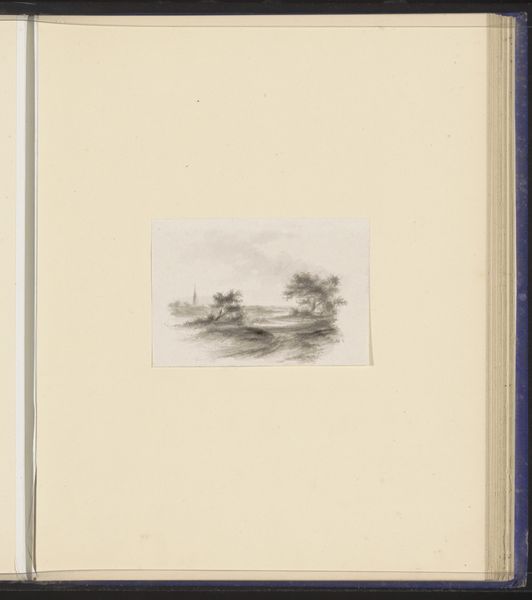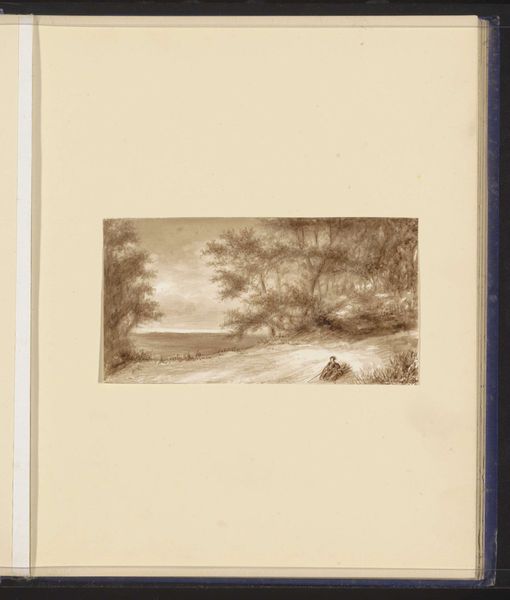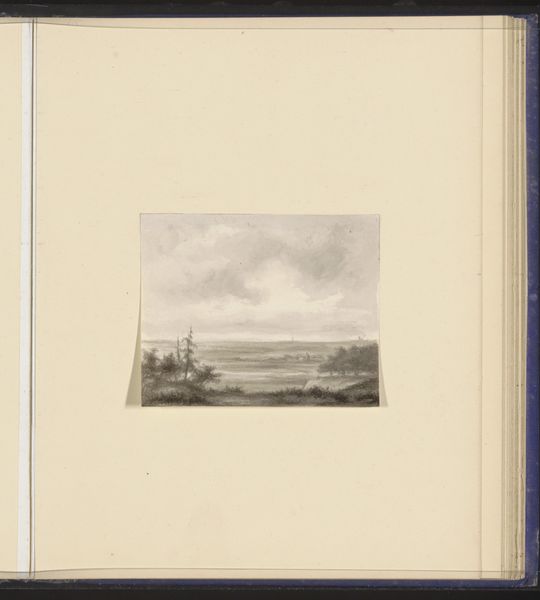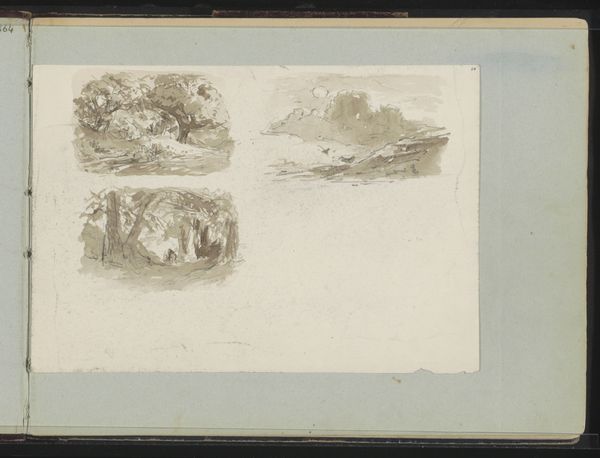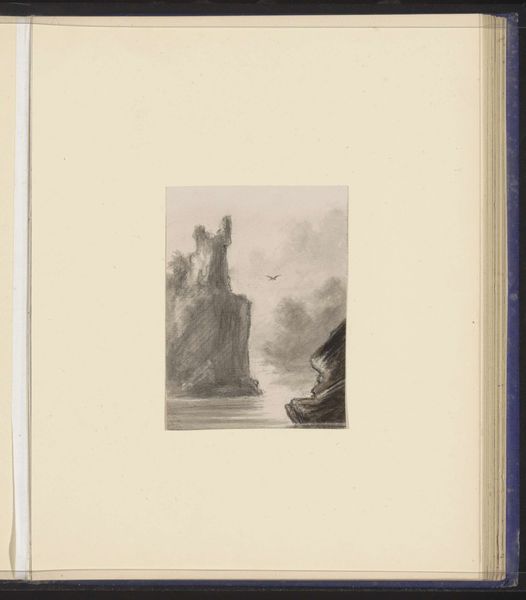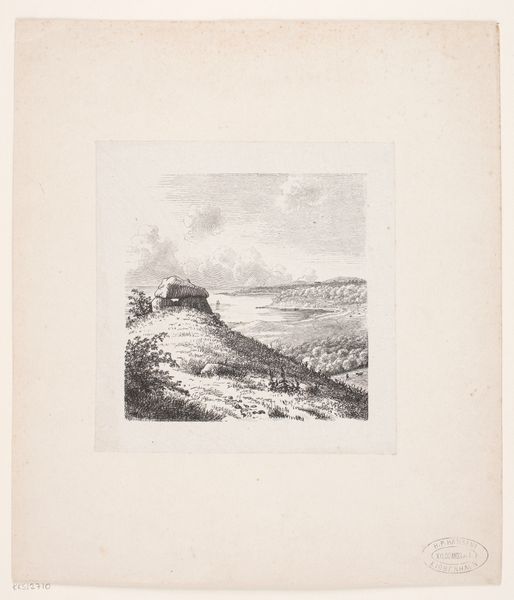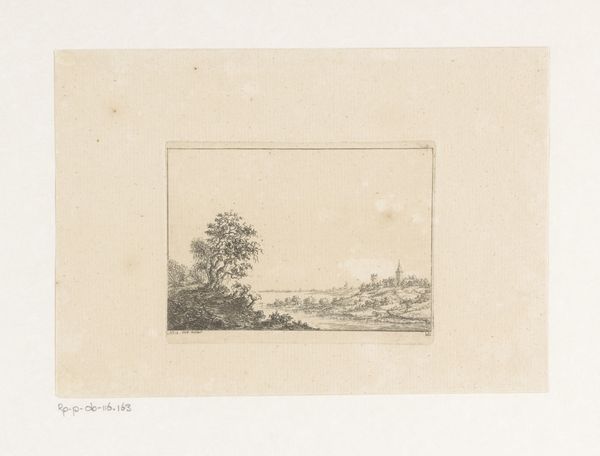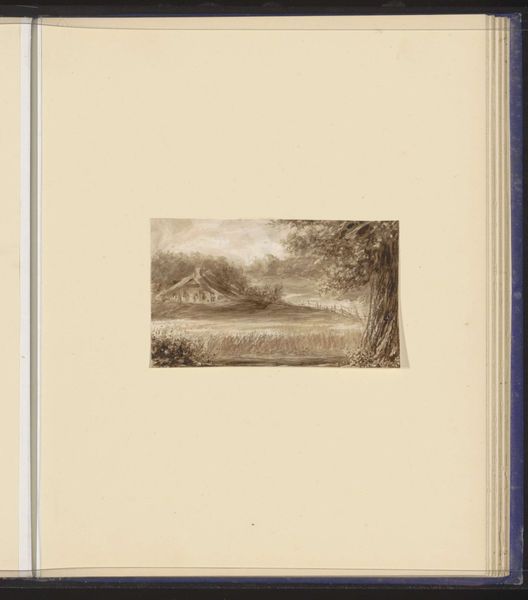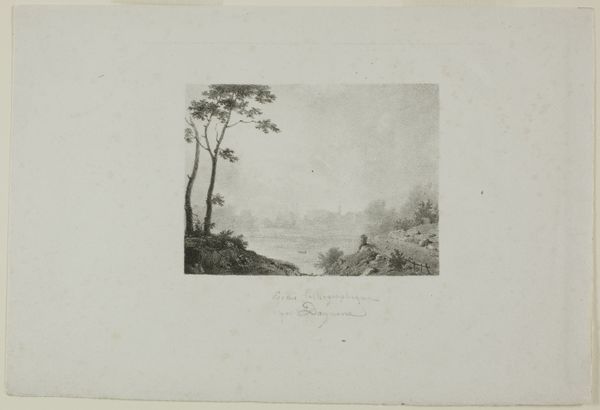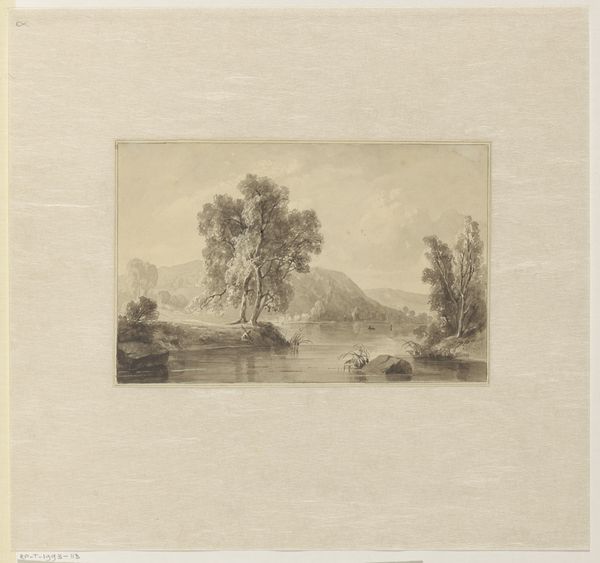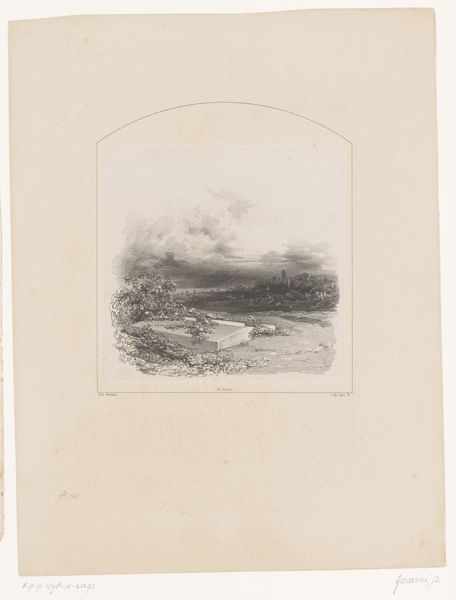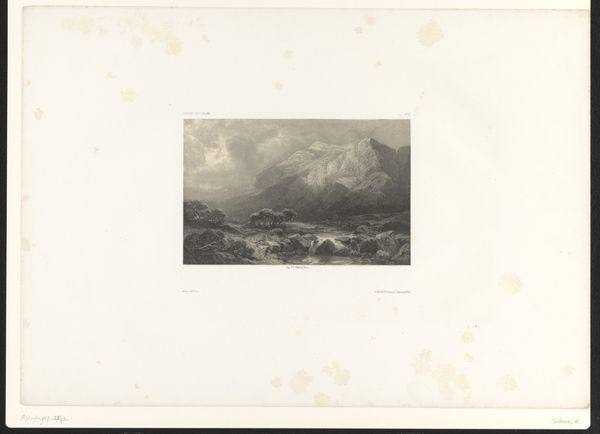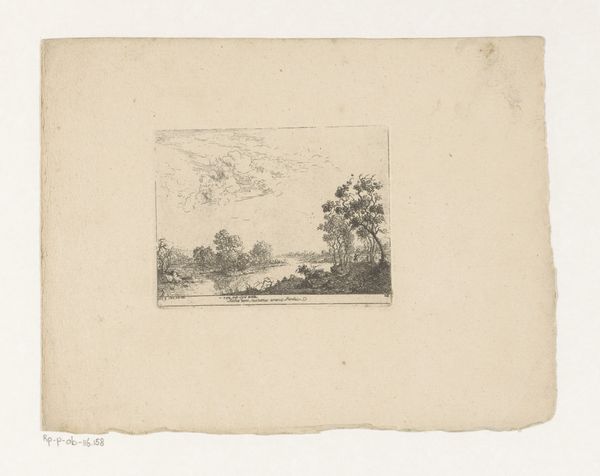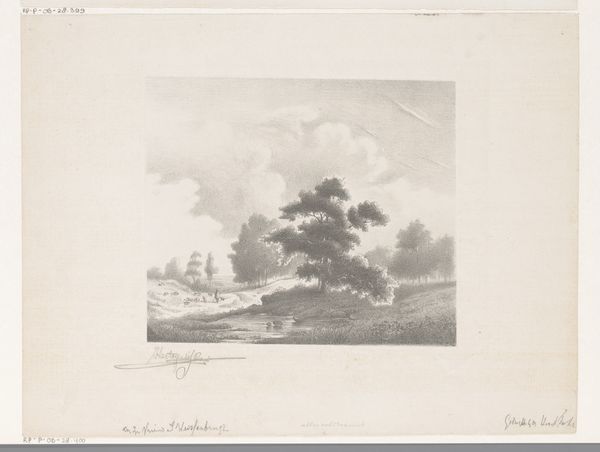
Dimensions: height 93 mm, width 125 mm
Copyright: Rijks Museum: Open Domain
Curator: Here we have Alexander Ver Huell’s "Berglandschap met een rivier en bebouwing," or "Mountainous Landscape with a River and Buildings," created around 1882. It’s rendered with ink, watercolor, and what appears to be coloured pencil on paper. Editor: It’s wonderfully subdued. The palette is muted, almost sepia-toned. There's a hazy quality to it that gives it a dreamlike feel. The smallness, too, reinforces a kind of nostalgic remoteness, don't you think? Curator: Yes, that sepia tone comes from the use of ink and watercolor washes. We can imagine Ver Huell sketching outdoors, then adding layers back in the studio. It’s clearly Romantic in style, drawing on established landscape painting traditions of evoking sublime, almost spiritual, responses to nature. Editor: Definitely a loaded genre, the "sublime landscape." I’m interested in that tiny hint of architecture in the distance – a small collection of columns across the water, just barely perceptible, almost ethereal. What could that be symbolic of, do you think? Curator: That touch of classicism reminds us of a historical, even a kind of lost, human impact on the landscape. Given the timeframe, there is something that contrasts in the building itself and nature; it might reflect on the relationship between industry and idyllic representations. Remember the 19th century saw growing urbanism... it plays with that tension. It's not just about representing a landscape; it's about memory, about human labor upon that space. Editor: Fascinating. So even in what appears to be an idyllic vista, there's a subtle comment on progress, industrial change, and human encroachment. I like how that single motif seems to act as a bridge, connecting past with present, and nature with culture. The translucence and soft textures carry a strong undercurrent of temporality, don't they? Curator: Absolutely, it shows that these landscape artists actively negotiated industrialization and, like other works of the period, offered alternative perspectives on these events and movements by representing the land. It wasn't passive but responsive, creating, with those watercolour and pencil strokes, a new lens to look back at the period. Editor: Seeing the industrial context brings out those elements even more; thanks for shining some light into this picture. Curator: It was enlightening to approach it through the cultural meanings it evokes, as you've noted.
Comments
No comments
Be the first to comment and join the conversation on the ultimate creative platform.
